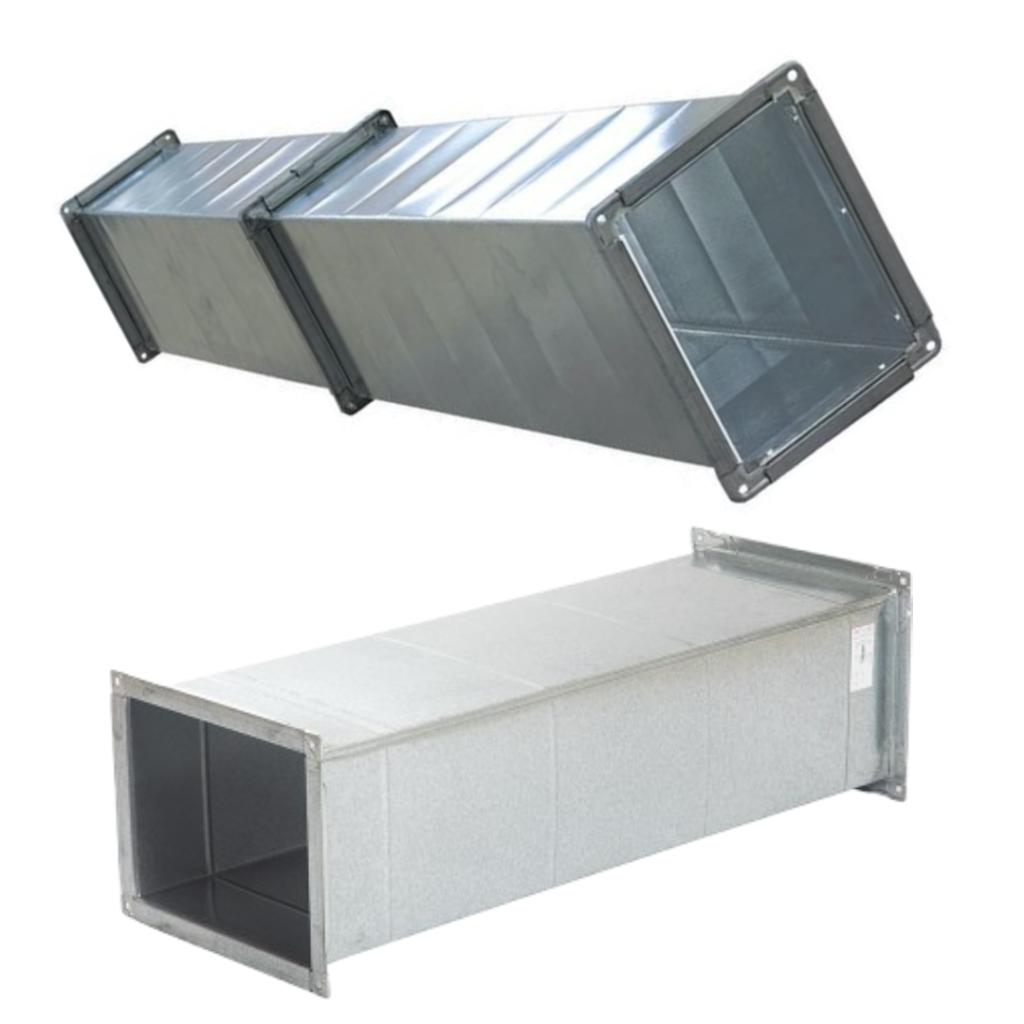When it comes to HVAC systems, ducts are like the highways that carry air throughout a building. Choosing the right duct shape is more than just a design decision—it can affect airflow, installation cost, and long-term energy efficiency. The two most common options are Rectangular type duct and circular ducts. With the rise of Factory Fabricated Duct and Ready Made Duct solutions, the decision has become even more relevant for contractors and building owners.

Let’s break down the differences in a simple, easy-to-understand way.
Shape and Space Requirements
-
- Rectangular Type Duct
With flat sides and sharp edges, rectangular ducts are easy to fit into ceilings, walls, and tight spaces. This makes them very popular in commercial buildings where space is at a premium.
- Rectangular Type Duct
-
- Circular Duct
Round ducts are more compact in terms of airflow efficiency, but they need extra clearance space. They work best in open areas such as factories, warehouses, or exposed ceiling designs.
- Circular Duct
Airflow and Efficiency
-
- Rectangular Type Duct
Air tends to face more resistance inside rectangular ducts because of the corners. While this doesn’t make them inefficient, it may require stronger fans to maintain proper airflow.
- Rectangular Type Duct
-
- Circular Duct
The round design allows air to move smoothly with less friction. As a result, circular ducts usually have lower energy losses and help keep systems quieter.
- Circular Duct
Installation and Cost
-
- Rectangular Type Duct
One of the biggest advantages today is the availability of Factory Fabricated Duct and Ready Made Duct products. These are manufactured with precision, making installation faster and reducing on-site labor costs.
- Rectangular Type Duct
-
- Circular Duct
Although slightly more complex to fabricate, circular ducts are quick to install thanks to their standardized fittings. They often prove cost-effective over the long run due to better efficiency.
- Circular Duct
Noise and Leakage
-
- Rectangular Type Duct
If not sealed properly, rectangular ducts can allow more air leakage at the joints. Noise levels may also be higher because air turbulence builds up at the corners.
- Rectangular Type Duct
-
- Circular Duct
Circular ducts usually perform better in this area—they are naturally airtight and provide quieter operation.
- Circular Duct
Which One is Right for You?
-
- Go for a Rectangular type duct if your project has tight spaces, limited ceiling height, or requires a neat flush installation.
-
- Choose Circular duct if you want better airflow efficiency, reduced leakage, and quieter performance.
Both options are now available as Factory Fabricated Duct or Ready Made Duct, which means you don’t have to worry about quality or precision. The choice mainly depends on your project’s layout and priorities—space vs. efficiency.
Final Thoughts
Rectangular and circular ducts both serve the same purpose, but their differences in shape, efficiency, and installation make each one suitable for different scenarios. With modern prefabrication techniques, both duct types can be manufactured to exact standards, ensuring durability and easy installation.
Whether you select a Rectangular type duct for compact spaces or a circular duct for high-efficiency airflow, using Factory Fabricated Duct or Ready Made Duct solutions will save time, reduce waste, and deliver long-lasting performance.

